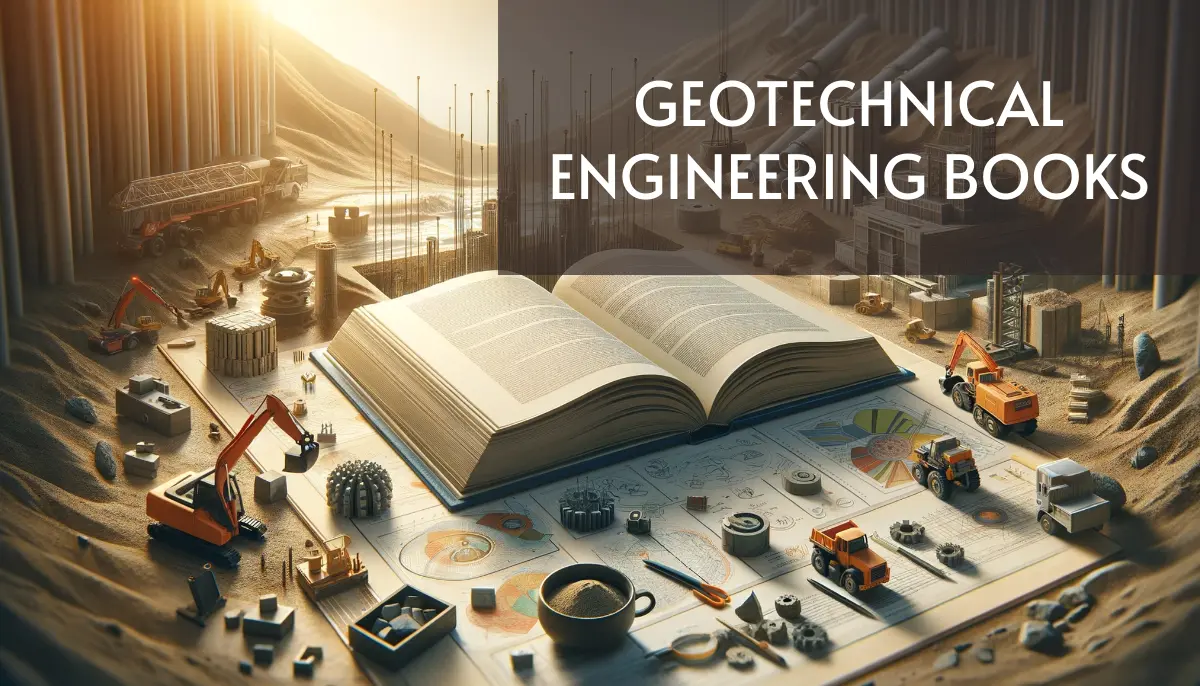We present our collection of geotechnical engineering books in PDF format. Its importance lies in the fact that the field of study of soils and construction has been growing significantly since the last century.
Nowadays, this discipline is applicable in a variety of fields, since it draws from many areas of knowledge, among which we can mention: civil engineering, geology, hydrology, hydraulics, soil mechanics, topography, and foundations, among many others.
Let us now delve into its definition and see precisely in which fields it can be applied today. Geotechnical engineering is a branch of civil engineering and geology that studies the relationship between buildings and soils.
In its beginnings, geotechnical engineering focused only on the mechanical properties of soil and rocks. However, its field of study gradually expanded. Today, it develops other areas such as earthquake engineering and soil optimization.
Investigate this area of knowledge with our selection of more than 35 materials including geotechnical engineering books and articles in PDF format, all free to access and easy to download.
Geotechnical Engineering books
Soil mechanics Books
Get free access to a selection of soil mechanics PDF books and expand your knowledge in this fundamental discipline for engineers and construction professionals.
Soil mechanics in geotechnics is a branch of civil engineering that focuses on the analysis and design of structures and foundations by considering the properties and behavior of soils.
Discover how soil mechanics in geotechnics is fundamental to the design and construction of infrastructure and tools for assessing soil bearing capacity, slope stability, and the interaction between soil and structure.
Cementation design books
Cementation in design refers to the process of joining materials together through the use of cement. This method is widely used in construction and architecture to ensure the stability of structures. Get free access to a selection of cementation design PDF books.
Cementing is performed by mixing cement with water and other additives, forming a paste that is applied to the materials to be joined, thus creating a solid and resistant connection.
In cementation design plays a crucial role in enabling the creation of structural and decorative elements. Cement acts as a binder that binds different components and materials, such as bricks, stones, tiles or concrete blocks.
Well design, cementing techniques and well work-over to land deep production casings in the menengai field
Abraham Wamala Khaemba
Cementing design for deep carbon dioxide (c02) injection wells
Nurul Iffah Binti Muhammad Garis
Current concepts and outcomes in cemented femoral stem design and cementation techniques - the argument for a new classification system
Adrian J. Cassar-Gheit and others
Rock Mechanics Books
Rock mechanics is an engineering discipline that focuses on the behavior of rocks and their application in the construction of geotechnical works. Learn more our rock mechanics PDF books.
Rock mechanics is applied in projects such as tunnels, dams, excavations, and slope stabilization, where it is critical to understand the strength and fracture of rocks to make appropriate design decisions.
Rock mechanics is essential to the success of geotechnical projects. It provides the theoretical and practical foundations necessary to understand the behavior of rock formations and their interaction with the structures built on them.
Tunnels and underground excavations books
Tunnels and subway excavations are structures built below the earth’s surface for various purposes. In our collection of Tunnels and underground excavations PDF books you can find a lot of information.
Tunnels can be used for the transportation of people and goods, the construction of sewage systems, utility cables and even as shelters in case of natural disasters.
Today, advances in technology and engineering have enabled the construction of increasingly complex and efficient tunnels and subway excavations.
Assessing the tunnel stability in brittle rocks based on strain bursting assessment
Lans Aujmaya, Ioannis Vazaios and Chrysothemis Paraskevopoulou
Overbreak in Underground Excavations - Some Key Insights (Article)
H.K. Verma, P. K. Singh, A. Swarup and others
Slope stabilization Books
Explore the exciting world of slope stability with this amazing collection of Slope stabilization PDF books and access a wide selection of free books that address this important topic in Geotechnical Engineering.
Slope stability is a fundamental concept in Geotechnical Engineering that refers to the ability of a sloping terrain to resist stresses and maintain its shape without sliding or collapsing.
Slopes can be found in different situations, such as roads, excavations, natural slopes, or construction on sloping ground. By using appropriate analysis and design techniques, engineers can assess and mitigate the risks associated with slopes.
Geotechnical Approaches for Slope Stabilization in Residential Area
N.Mizal-Azzmi, N.Mohd-Noor and N.Jamaludin
Erosion control and slope stabilizationof embankments using vetiver system
Shamima Nasrin
Earthquake engineering books
Earthquake engineering is a specialized field of building structures that can withstand the destructive effects of earthquakes. Earthquake engineering books in PDF provide a valuable resource for understanding the fundamental principles of this discipline.
Through careful design and the use of innovative techniques, earthquake engineers seek to minimize the damage caused by seismic movements, protecting the lives of people and the integrity of buildings.
This discipline combines knowledge of geology, physics and structural design to create solid and safe solutions in earthquake-prone areas.
Environmental geotechnics books
Environmental geotechnics is a discipline that focuses on the study of soils and rocks from an environmental perspective. Explore the exciting world of slope stability with this amazing collection of Environmental geotechnic PDF books
Environmental geotechnics combines the principles of geotechnics, which deals with the behavior of soils in relation to constructions, with the care and preservation of the environment.
Through analysis and evaluation techniques, environmental geotechnics seeks to minimize the impact of human activities on soils and the natural environment.
Sustainable Geotechnics -Theory, Practice, and Applications (Article)
Slobodan B. Mickovski
Here ends our selection of free Geotechnical Engineering books in PDF format. We hope you liked it and already have your next book!
If you found this list useful, do not forget to share it on your social networks. Remember that “Sharing is Caring”.
Do you want more Engineering books in PDF format?
Engineering Books
| Aeronautical Engineering Books
| Agroindustrial Engineering Books
| Automotive Engineering Books
| Biochemical Engineering Books
| Biomedical Engineering Books
| Electrical Engineering Books
| Electromechanical Engineering Books
| Environmental Engineering Books
| Geological Engineering Books
| Industrial Engineering Books
| Mechanical Engineering Books
| Mechatronics Engineering Books







































